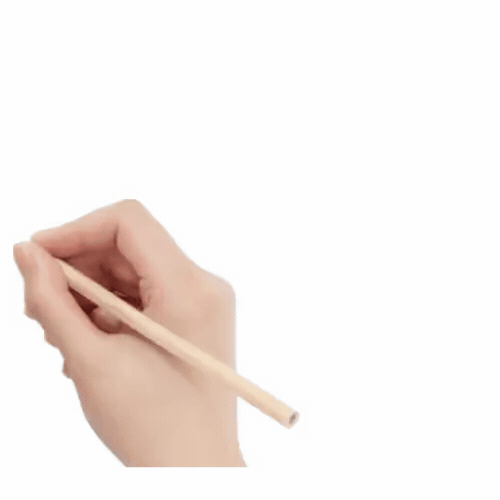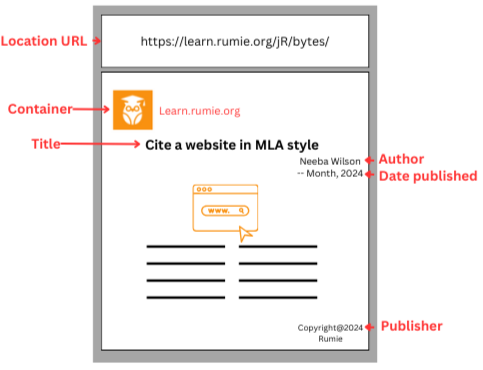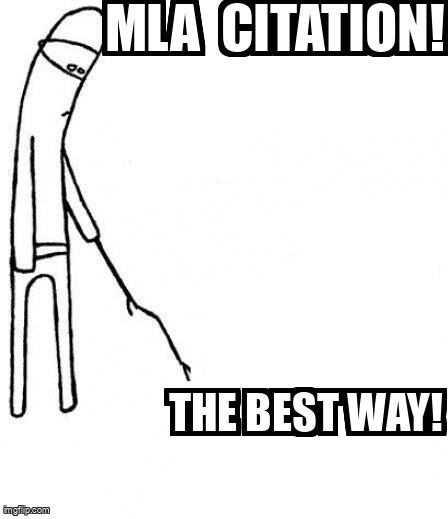
This logo isn't an ad or affiliate link. It's an organization that shares in our mission, and empowered the authors to share their insights in Byte form.
Rumie vets Bytes for compliance with our
Standards.
The organization is responsible for the completeness and reliability of the content.
Learn more
about how Rumie works with partners.
 Image created by author using SpeedPaint
Image created by author using SpeedPaint
After several hours of brainstorming and browsing the internet for sources, you've gathered all the information you need for your assignment and completed the writing task.
Hold on!🫸🏼
Your professor has asked you to use MLA style to reference your sources, and you're feeling a bit lost about how to cite a website in MLA style.
Have you ever felt confused or faced difficulties while citing a source in MLA style?
Don't panic! It's easier than you think. Get those references to stand out!
MLA citation components
Author. (if available)
"Title." (title of webpage in quotations)
Container, (website name in italics)
Publisher, (if different from the website name)
Publication date, (date with month abbreviated, year)
URL. (the web page's address)
Format:👇
Author. "Title of the Webpage." Name of the Website, Publisher, Publication date, URL.
 Remember⚠️
Remember⚠️
Each element ends with a comma or a period.
If something doesn't apply, skip it!
Citation example
Check out the MLA citation for this Rumie Byte below:
Wilson, Neeba. “Need to learn protein synthesis? These simple diagrams & analogies will help!” Rumie-learn, 14 June 2024, learn.rumie.org/jR/bytes/need-to-learn-protein-synthesis-these-simple-diagrams-analogies-will-help.
Quiz
While reading this Byte from the Rumie website, what does "Rumie" represent in MLA style?
"Rumie" represents both the container and the publisher. In MLA style, the container is the larger work that houses the source, which in this case is the Rumie website. The publisher is the organization responsible for making the source available, which is also Rumie. Therefore, Rumie serves as both the container and the publisher in your citation.
Author citations
Here is the breakdown of the author part when you cite a website in MLA style:

Single author
Last name, First name.
E.g. Smith, David.
No author
If there isn’t an author listed, skip it!
Start the citation with the title.
Two authors
Last name, First name, and First name Last name.
E.g. Smith, David, and Jane John.
Three or more authors
Cite only the first author's name, et al. Last name, First name, et al.
E.g. Smith, David, et al.
Citing webpages in-text

In MLA style, citing webpages in-text follows the format shown below:
(Author's last name)
("Title of webpage") if no author is listed
If you're referencing a point made by the author (in this case, Neeba Wilson on the Rumie website), your in-text citation would look like this:
According to Wilson, MLA style is straightforward once you understand the core elements (Wilson).
If the webpage doesn't have an author, it would look like this:
MLA style is straightforward once you understand the core elements ("How to Use MLA Style").
Best practices
Here's how to quickly and accurately cite a website in MLA style:

MLA only requires the www. Address. So, simplify URLs! Drop the https://.
If the publisher's name matches the author or the title, skip it!
Online info can change or disappear. Download or print key documents to have a backup. You could also use the bookmark function.
Note when you first accessed the page. It’s not required, but it’s a good habit.
Take Action
Now go forth and cite with style!
Follow these steps to learn more about MLA style:

This Byte has been authored by
Neeba Wilson
Scientific writer
Masters